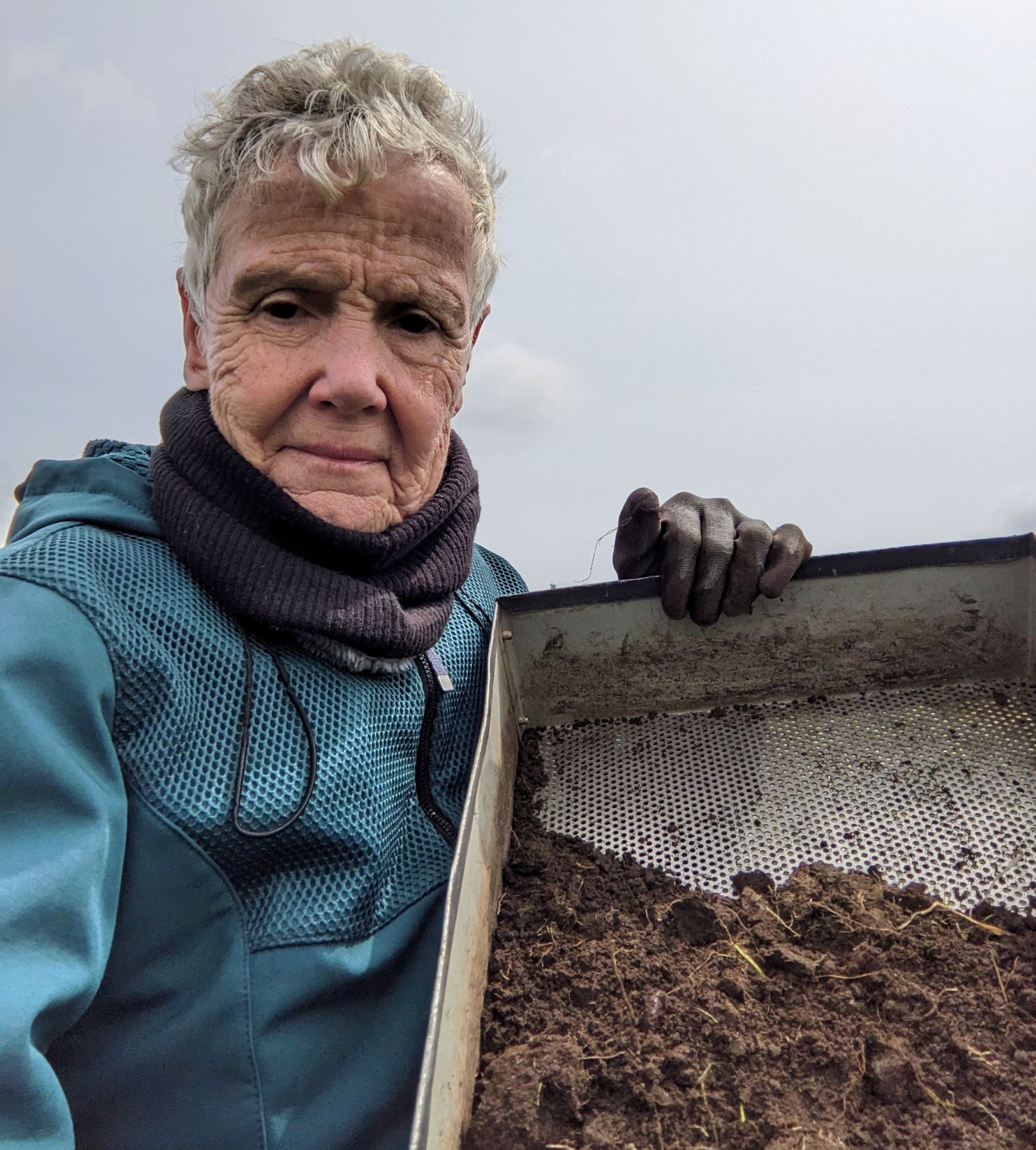
We looked for all the world like turtles, hunched over close to the ground. In our hands were tiny, sharp trowels, which we scraped, scraped, scraped carefully over rocky ground. Every once in a while, someone would straighten up, hand outstretched, eyes bent on something in the palm.
“What did you find?” a person nearby inevitably called, and perhaps others would join in. Heads would lift up.
Thus was the rhythm of the days at an archaeological dig in the heart of the Burren here in County Clare in early May. A “community excavation” coordinated by the local land trust, it involved people the likes of me as well as more experienced amateurs who worked with a field archaeologist at two sites on a bit of isolated farmland.
The archaeologist had long scoped the landscape of that area, probing for the ancient clues of habitation in the tufty grass and jutting karst. Even someone as untrained as I could see why she chose the site. Clear as could be, you could see concentric circles in the rock formations – a sign coming down through the millennia that these manmade stone berms held purpose. And so it appears they did. Beads, pottery sherds, animal teeth, arrowheads and more were discovered during the three-week dig, artifacts that the archaeologist will now analyze, and then create a written narrative of the land. It seems safe at this initial stage to say that the place was used for many hundreds of years – glass beads being a significantly later invention than simple arrowheads.
How do I know that? I suppose logically any of us could surmise that the tools and skill that goes into creating a glass bead might be later in human evolution than the tools and skill needed to create a simple arrowhead. But I had never really given much thought to it during my life as a child of books, a working journalist and a mother, nor could I have anticipated that such matters would ever hold allure.
I certainly have long been a student of history and mythology. That may hold some clue as to why I made the somewhat unlikely decision at the ripe age of 70 to enroll last fall in a two-year online diploma program in Irish archaeology at the University of Galway. This is not a degree program; I didn’t have to send away for dusty undergraduate and graduate records when I applied. It is open to anyone regardless of academic background or domicile with an interest in the archaeology of Ireland. Indeed, some of my virtual classmates are from the US, France and other countries, although most are native Irish. Virtually all of them are younger than me, a number of them by many, many years, and most work full-time.
But make no mistake, although this is a diploma program, it is well regarded in Ireland, in no small part because the academic rigors are not for the faint of heart. We took three courses during the year, beginning with the Mesolithic period (8,000 to 4,000 BC) and continuing through the Middle Ages (up to the 16th century AD). Each week, I devoted 8-14 hours, reading the required texts, interacting with other students through a virtual discussion board and writing a short 300-word essay on the material covered. Some very likely did this in less time than it took me, but elders have their privileges! Every eight weeks, as each course concluded, we were required to write a 1,500-word, intensely researched essay with citations and bibliography. This actually made my head hurt, the academic dive was so deep, sustained and meticulous. We started with about 50. I think about 35, maybe 38 of us concluded the year.
Several disparate threads wove together to inform my decision to enter this program. As I have expressed to you in any number of blogs, I was in thrall to the mythology and history of Ireland long before I moved here. It’s not particularly easy to embrace a whole new culture, with its own language, customs and shared past. And I have a long, long way to go. But by now, I feel confident that I am at least not a completely unschooled idiot in such matters.
In America, the ancient past of the native peoples has been obliterated or ignored or marginalized by generations of colonizers to the modern day. Here in Ireland, the past is held in much higher regard, and has been. I know I’ve talked about this before, but it bears repeating because of its relevance to my archaeological tale. From the earliest days of Christianity here, around 400AD, Ireland attracted literate monks and priests from the Continent, many of whom lived in community with the Irish. They wrote ecclesiastical texts, of course, but they also committed to writing the mythology of Ireland as passed down through the oral traditions of generations untold.
The result is a truly astonishing compendium of texts that details the arrival of the Nemedians, then the Fir Bolg and, most importantly, the Tuatha de Danann (or tribe of the goddess Danu) – the pantheon of gods and goddesses who lived in the Otherworld below the earth and often took human form among the living. Their tales and exploits, battles and lives – and, indeed, of those who came before and after them — have been preserved in texts that are available online, if you can believe it, to anyone today. To see for yourself visit http://www.maryjones.us/ctexts/index_irish.html. The Book of Invasions is a good place to start.
Now, as these were written down by monks, there is often a certain ‘Christianizing’ of the tales, and separating wheat from chaff is certainly an academic exercise. But, really, wow. One thinks of Rome and Greece as the European cultures having the corner on the mythology market, but Ireland can rival them, I believe. You have to wonder what would be contained in a similar American Indian compendium if only their voices were preserved.
In any event, as I explored these texts, I found myself thinking more and more about the Irish people who lived here so many millennia ago. Who were they? Where did they come from? What were their day-to-day lives like, their spiritual practices? I have the mythology at my fingertips; I have a working knowledge of the Christian influences. But of the people, I knew next to nothing. To my mind, the only logical solution was an academic grounding in archaeology.
I said there were disparate threads that brought me to this decision. Another was simply the need to keep my mind engaged. I had been through COVID and out the other side while living here. As life began opening up again, really opening up, I took stock just about this time last year. I’ve written about this period as well. Once I committed in my mind and spirit to staying here in Ireland at least for a while into the future, I knew that it was time to explore new learning opportunities, new “data” for my brain. Work and family life leave few moments for such things. But I’m free of those constraints now. I have time for me. And the me I want to become is always learning.
I don’t regret my decision to enroll in the program, not for a moment, although I still have one more year to go and I’m not sure what that will hold in store! People often ask what I intend to do with my diploma. Some of my younger classmates see it as a springboard for work at monument sites perhaps, or a museum. But many, like me, are just doing it simply for the love of learning. I’d be content if the diploma provided credibility in case I want to volunteer on other excavations in the country. But that’s about it.
By the way, the University of Galway just released our grades today, and I was gratified to see I’d received an A. The old brain is still ticking over, it seems!
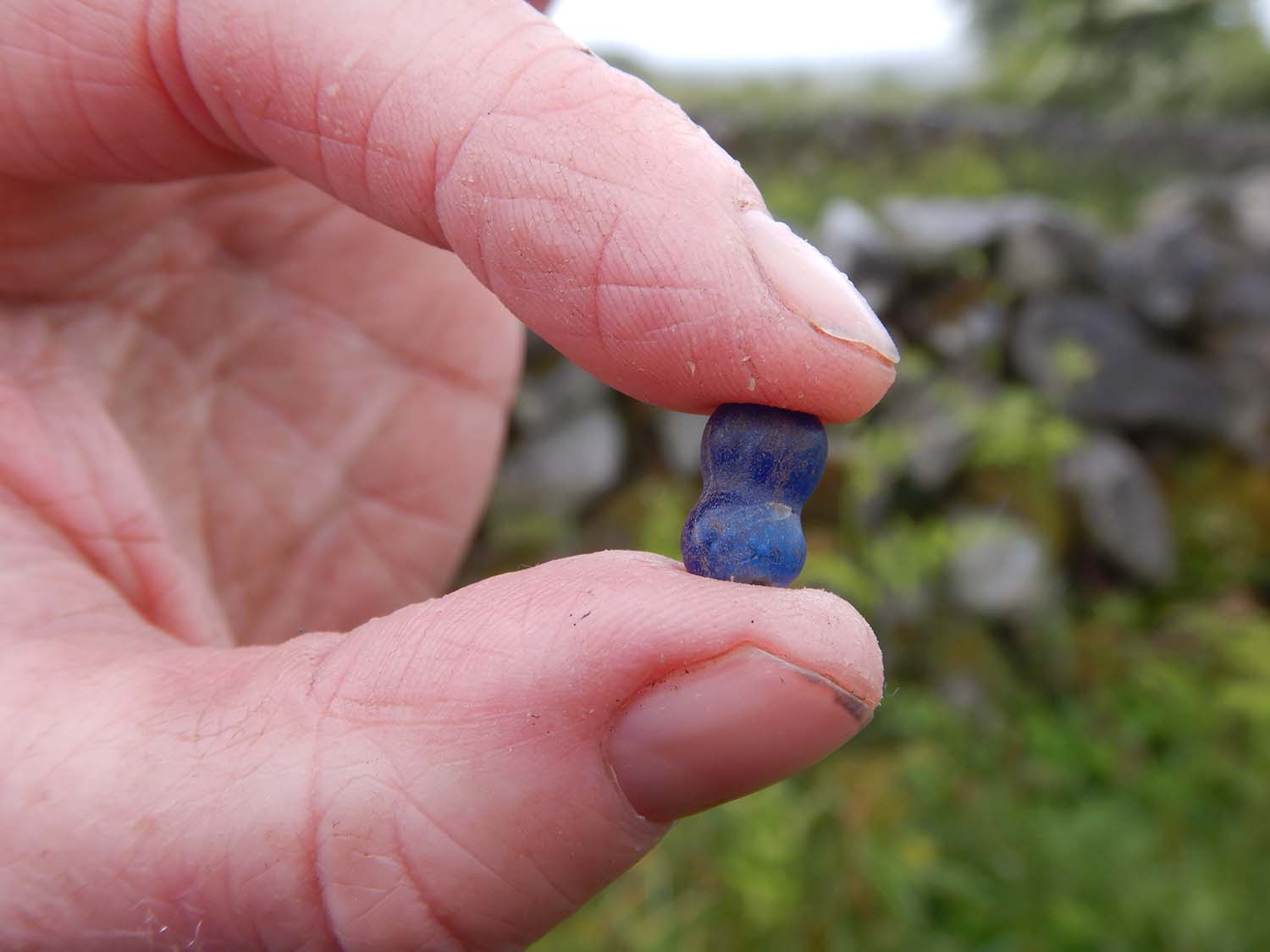
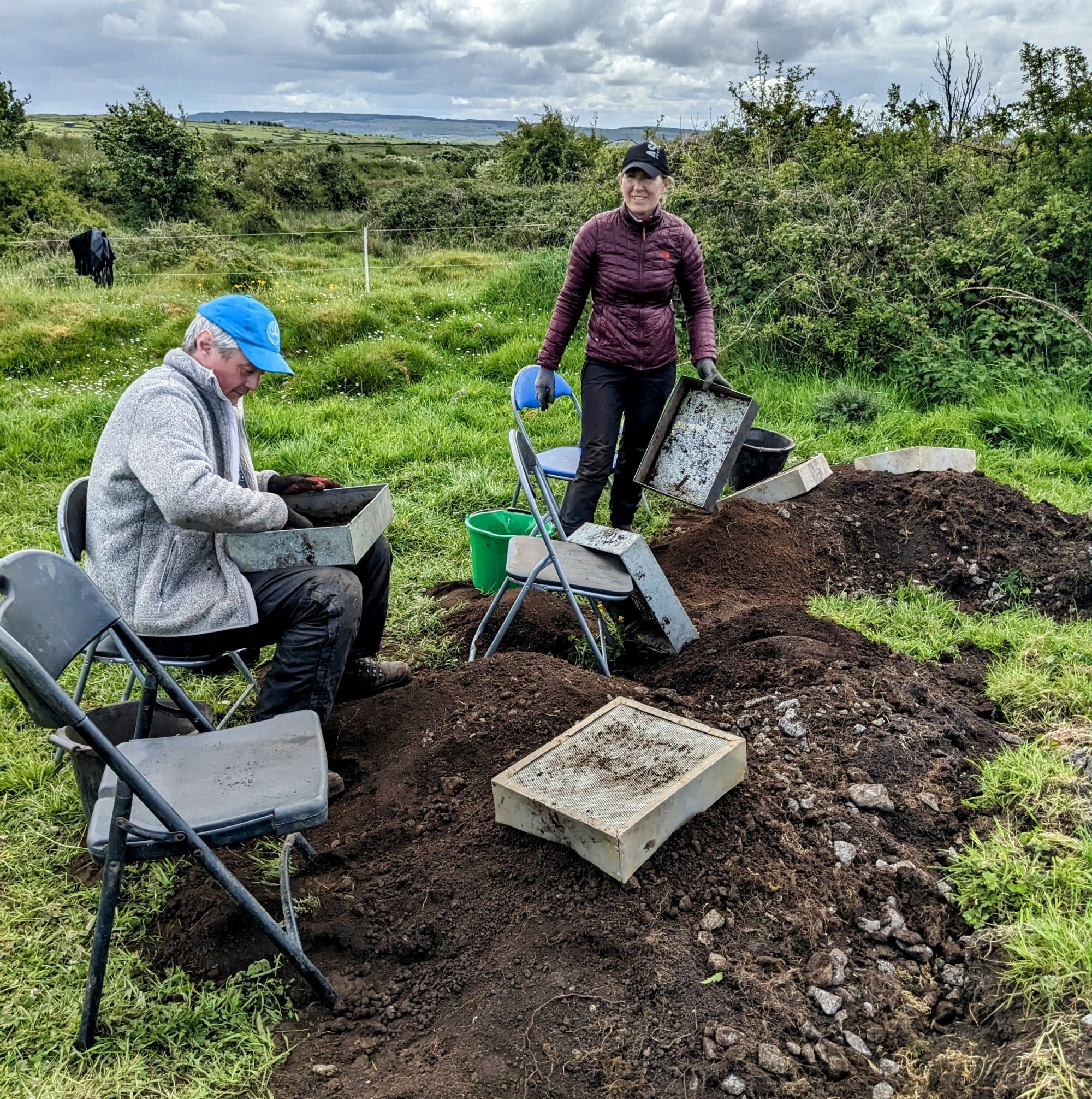
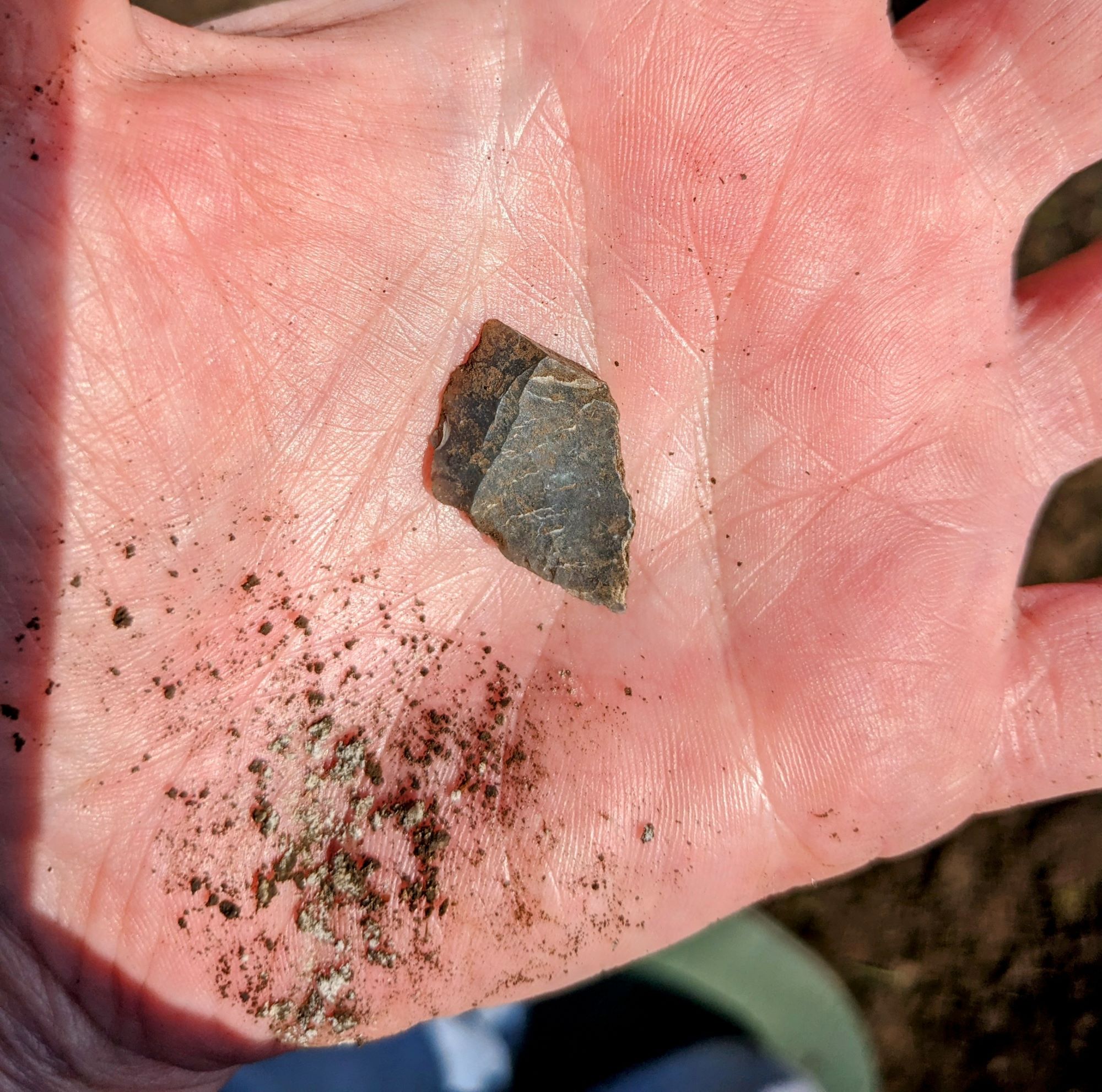
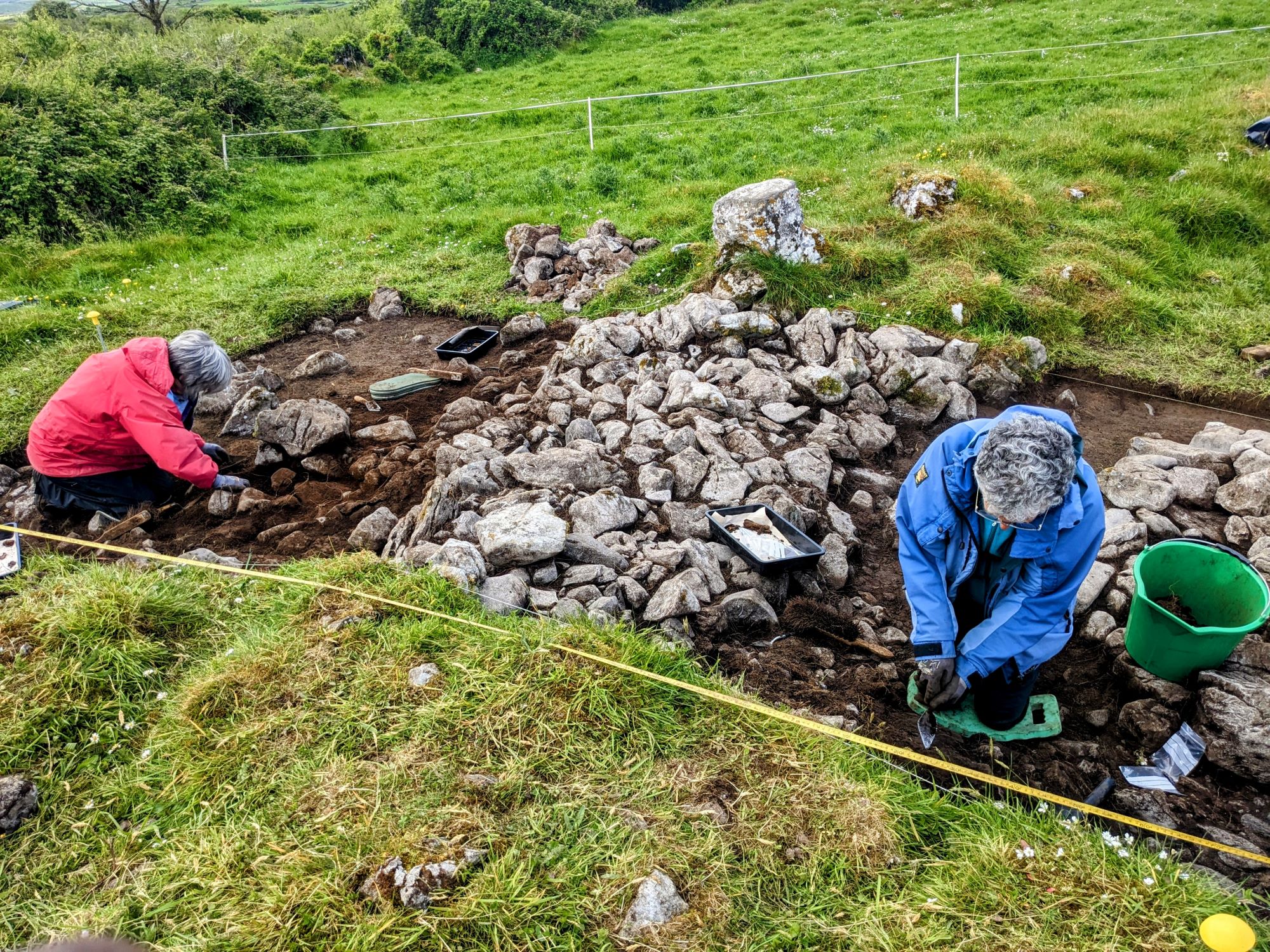
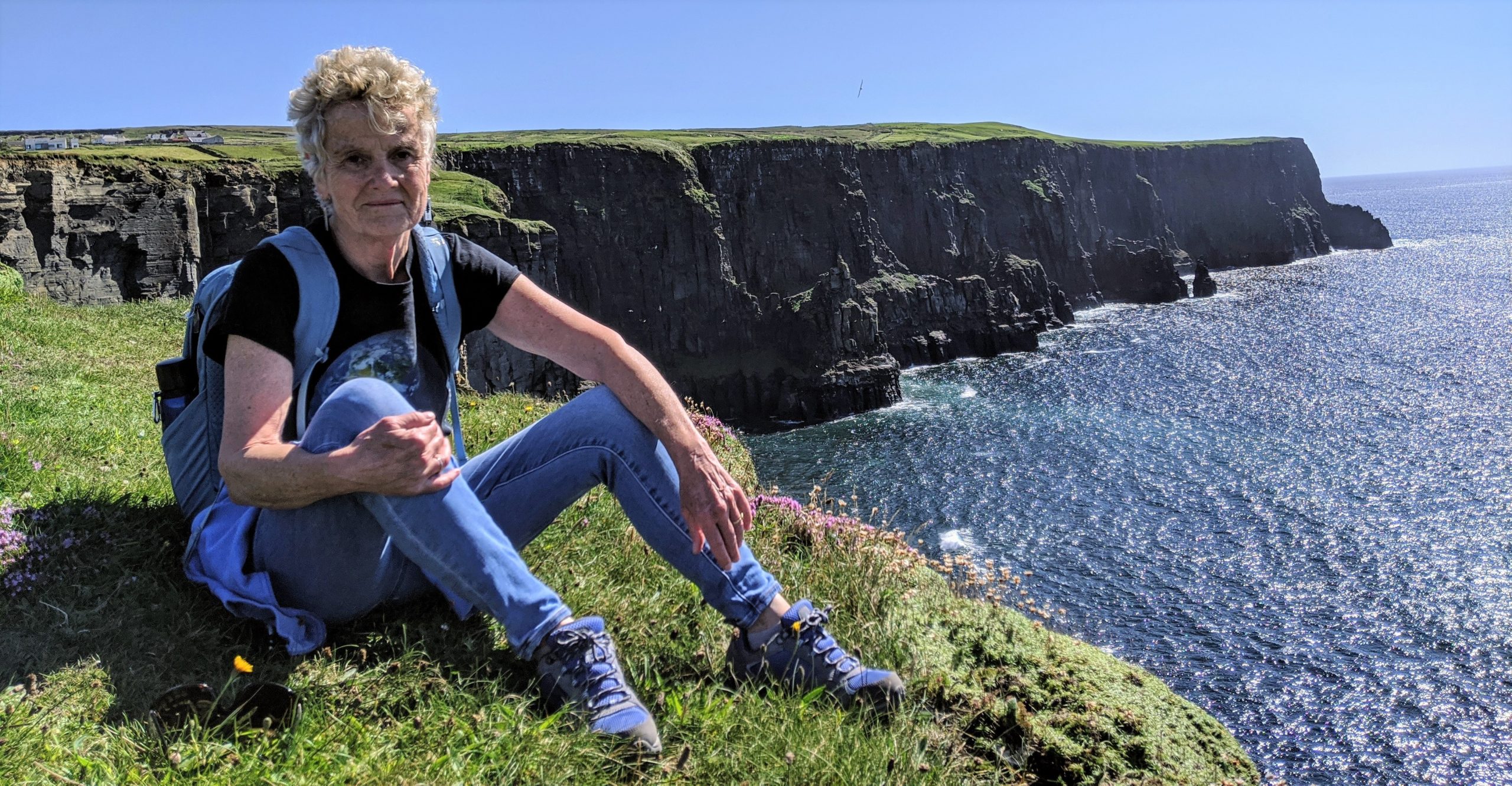
Reader Comments
You are an academic inspiration! I knew about the course and it is so interesting to hear what lead you to it. Happy digging!
I’m still in awe of all that!! You need to be very proud of your “A”. It was no small feat, and something very few would even try! Bravo, dear sib!
So true! Inspirational.. and fascinating. Good for you for following your curiosities.!!
I just had time to read and re-read this blog, Deborah, and wow – I am stunned and in awe of this commitment of yours! Admiration abounds, dear sis.
Inspirational! So excited for you, doing things you love!
Never stop learning! Must run in the family 😉